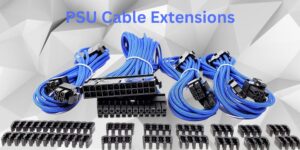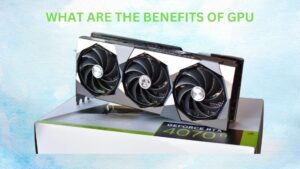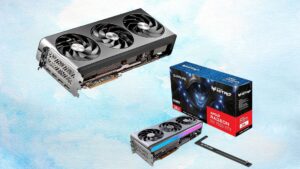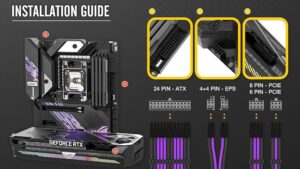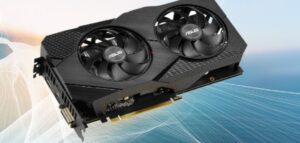Software Rendering vs GPU Rendering
When you gaze at your computer screen, the images and animations you see are the result of rendering processes. These processes define how your computer translates data into visual elements. Software rendering vs GPU rendering are two distinct methods that dictate how your device generates these visuals.
Whether you’re a tech enthusiast, a gamer, or just someone curious about the magic behind your screen, this article will guide you through the intricacies of these rendering techniques. Buckle up as we embark on a journey to explore the differences, advantages, and applications of software rendering and GPU rendering.
The Basics: Software Rendering
What is Software Rendering?
At its core, software rendering is the process of using a computer’s central processing unit (CPU) to calculate and render graphics. This method relies solely on the CPU’s computational power to create images and animations.
Advantages of Software Rendering
- Compatibility: Software rendering can work on almost any computer, as it doesn’t require specialized hardware.
- Precision: It offers pixel-perfect accuracy, making it ideal for certain scientific and design applications.
- Flexibility: Developers have more control over the rendering process, allowing for unique effects and styles.
Limitations of Software Rendering
- Performance: It can be slow and resource-intensive, resulting in laggy experiences for complex graphics.
- Hardware Dependence: Software rendering doesn’t harness the power of dedicated graphics cards.
The Powerhouse: GPU Rendering
What is GPU Rendering?
GPU rendering, on the other hand, leverages the immense parallel processing capabilities of a graphics processing unit (GPU) to handle rendering tasks. This method is commonly used in modern computers and gaming consoles.
Advantages of GPU Rendering
- Speed: GPU rendering is significantly faster than software rendering, thanks to the GPU’s parallel processing abilities.
- Real-time Graphics: It enables smooth and responsive real-time graphics, making it ideal for gaming and multimedia.
- Energy Efficiency: GPU rendering is more power-efficient, as GPUs are designed for graphics-intensive tasks.
Limitations of GPU Rendering
- Hardware Requirements: It requires a dedicated GPU, which may not be available on all computers.
- Complexity: GPU rendering can be more challenging to implement due to its hardware-specific nature.
Comparing the Two
Now that we’ve delved into the specifics of software rendering and GPU rendering, let’s compare them head-to-head.
Performance
- Software rendering excels in accuracy but lags in speed.
- GPU rendering offers blazing-fast performance, making it ideal for real-time applications.
Compatibility
- Software rendering is compatible with almost any hardware configuration.
- GPU rendering requires a dedicated graphics card.
Use Cases
- Software rendering is suitable for precision-critical tasks and unique visual effects.
- GPU rendering dominates in gaming, multimedia, and real-time applications.
Development Complexity
- Software rendering provides developers with more control but demands more effort.
- GPU rendering simplifies development but ties you to GPU-specific technology.
Conclusion
As we conclude our journey through the world of software rendering and GPU rendering, it’s evident that each method has its place in the realm of computer graphics. Software rendering shines in precision and flexibility, while GPU rendering rules the world of speed and real-time graphics.
Remember, there’s no one-size-fits-all answer when it comes to choosing between these rendering techniques. Your decision should be based on your specific needs and the hardware at your disposal. So, whether you’re designing the next digital masterpiece or embarking on an epic gaming adventure, the choice between software rendering and GPU rendering is yours to make.
FAQs
1. Can I use both software rendering vs GPU rendering simultaneously?
- In some cases, yes. Developers are exploring hybrid approaches that combine the strengths of both methods for optimal results.
2. What are the latest trends in rendering technology?
- Keep an eye on trends like ray tracing and cloud-based rendering solutions, which are shaping the future of graphics.
3. Are there any software rendering techniques that incorporate artificial intelligence?
- Absolutely! Some advanced software rendering techniques leverage AI to boost speed and quality.
4. Is GPU rendering always better for gaming?
- Generally, yes. GPU rendering’s speed and real-time capabilities make it the preferred choice for gaming and multimedia.
5. Can I use GPU rendering on any computer?
- GPU rendering requires a dedicated graphics card, so not all computers are compatible. Ensure your hardware supports it before diving in.
Last Updated on 20 November 2023 by Ansa Imran

Ansa Imran, a writer, excels in creating insightful content about technology and gaming. Her articles, known for their clarity and depth, help demystify complex tech topics for a broad audience. Ansa’s work showcases her passion for the latest tech trends and her ability to engage readers with informative, well-researched pieces.



